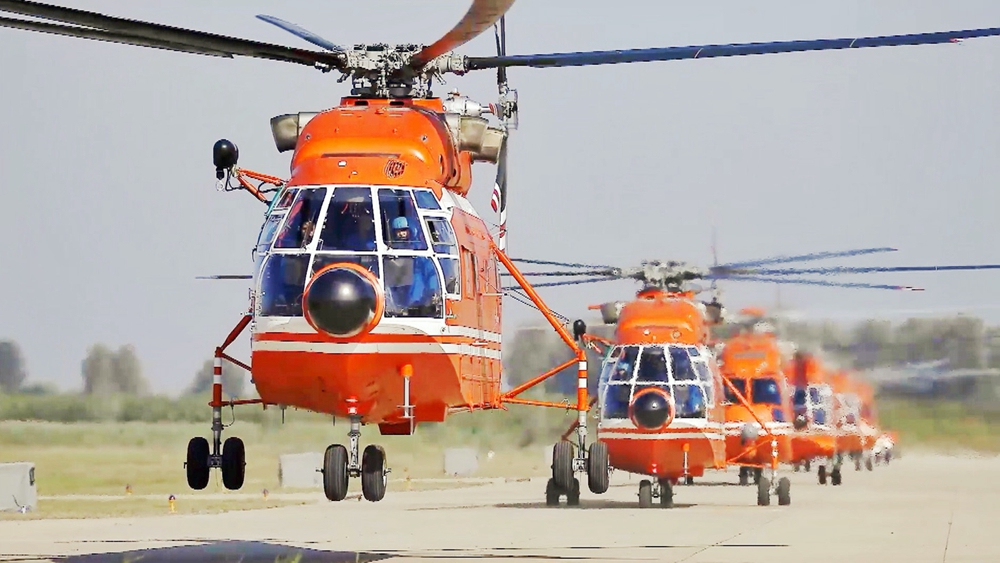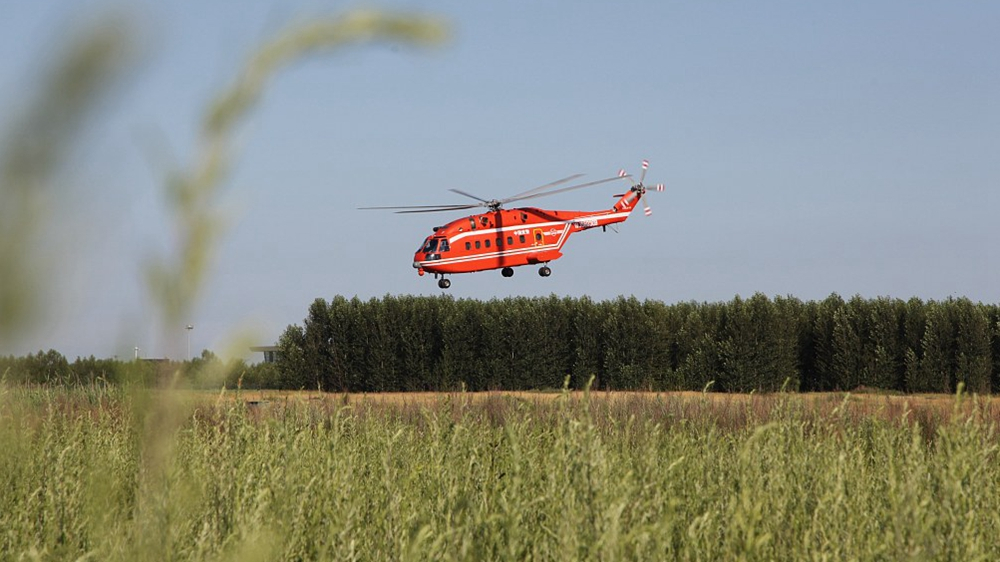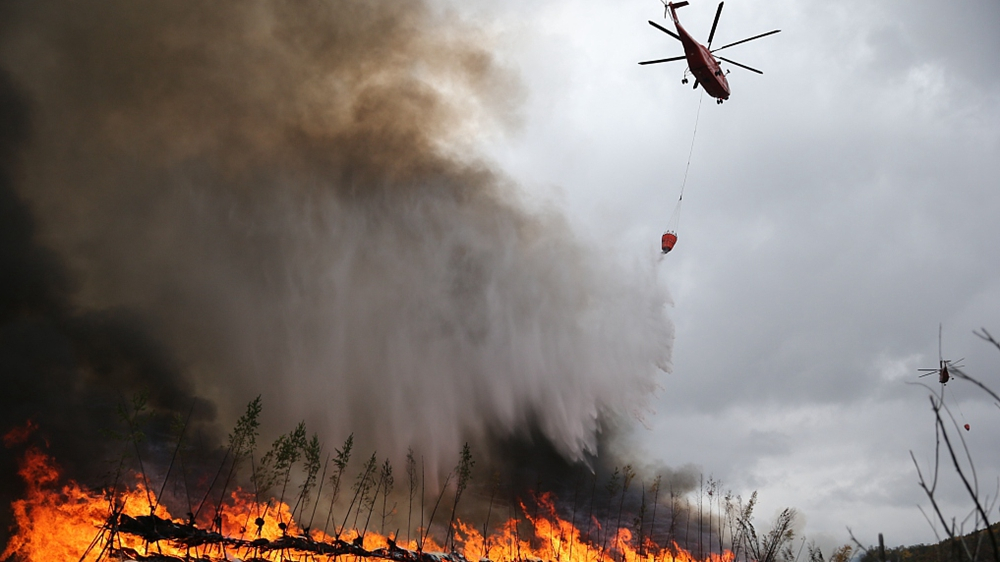03:30

November 9 marks the 28th National Firefighting Day in China. The annual occasion, established in 1992, aims to raise the general public's awareness about fire prevention and safety.
Based on data released by the Ministry of Emergency Management, comprehensively, China has nearly 200,000 fire rescue personnel. Among them, about 25,000 are responsible for battling forest blaze, under the management of the Forest Fire Bureau. A pivotal part of their team is the Helicopter Detachment.
In fact, helicopters have become an effective tool in firefighting, and are used not only to put out the flames and reduce the potential spread of a fire, but also to transport equipment as well as workforce to the scene.

A firefighting chopper flies in Daqing City, Northeast China's Heilongjiang Province, July 16, 2015. /VCG Photo
A firefighting chopper flies in Daqing City, Northeast China's Heilongjiang Province, July 16, 2015. /VCG Photo
The Helicopter Detachment
The Helicopter Detachment was founded in 2009 in Daqing City of northeast China's Heilongjiang Province. Following an institutional reshuffle in 2018, the aviation team was divided into two parts, one is the Daqing branch and the other one, the Kunming branch, in southwest China's Yunnan Province.
"The new establishment marks a strategic move for China to ramp up its aviation rescue. It helps coordinate firefighting and rescue operations both by air and on the ground. It also helps better allocate resources in northern China as well as in the south," Zhang Yinghai, Captain of Kunming Aviation Rescue Detachment, told CGTN in an interview.
Both the branches are part of the Helicopter Detachment, which altogether, operates 18 firefighting choppers, 11 of which belong to the Daqing team, and 101 vehicles, involving around 500 crew members.
The aviation rescue team takes on a gamut of responsibilities. Besides the routine forest firefighting and other fire-related accidents, they also deal with aerial rescue in situations like earthquakes, landslides, medical treatment, among other emergencies.
Liu Hong, one of the pilots with Kunming Aviation Rescue Detachment, commented that "Helicopters are the wings of emergency rescue forces. We are fast moving, unimpeded by roads and terrain, and have low take-off and landing requirements. We can go places that ground teams can not reach." In his view, the firefighting job is a noble and glorious undertaking, and one with great prospects.

Two helicopters put out the fire at the Greater Hinggan Mountains with water buckets in Northeast China's Heilongjiang Province, September 18, 2015. /VCG Photo
Two helicopters put out the fire at the Greater Hinggan Mountains with water buckets in Northeast China's Heilongjiang Province, September 18, 2015. /VCG Photo
Water Bombing Techniques
The Kunming team owns seven helicopters, covering regions not only in Yunnan, but also in neighboring provinces in China's hinterland, like Sichuan and Guizhou.
The choppers, with a model name known as Zhi-8, are the largest of its kind in terms of transporting capability. Each of them can deliver around 30 firefighting personnel and 3.4 tons of water on each pass. In optimal scenario, they can fly up to five hours in a non-stoppable way.
As CGTN found out, in Kunming, there are two similar ways for the aircraft to fight the flames – water buckets and water tanks. While the tank is a water container fixed to the aircraft, buckets are removable device and are attached to it with a cable.
Comparatively, water buckets are more widely-used in practice. Pilots control the timing and location to dump the water on the fire, and fill the buckets either in a lake, a river, or even a pool, given the approach is a safe one. It's more of a coordinated effort with ground personnel to extinguish the blaze.
In June 2019, a forest fire tore through the Greater Hinggan Mountains in northern China's Inner Mongolia. Eight helicopters, along with 5,000 firemen, worked four days and nights to contain the blaze.
In an interview with CGTN, Liu said: "We have to be well-prepared for each task. After we arrive at the scene, we first survey the fire site, and evaluate the direction and speed of the wind, and the terrain. Then we work out how we will coordinate operations. We work hard to put out fires as soon as possible, to keep damage of the forest to a minimum."
Since it was founded in 2009, the Helicopter Detachment has completed more than 100 emergency rescue operations. They have also worked out more than ten innovative ways to put out the fire from up in the air.
On the potential dangers of his job, Liu recalled a moment when a sudden bust of flames consumed the air under his helicopter and there's a strong force pulling him down. Fortunately, the team survived the ordeal. A much common danger for all pilots would be a blurred vision as a result of the thick smokes arising from the fires.
On firefighting day, Liu said: "It's the country and the public's recognition toward our job." He shared the hope that all emergency responders can safely and successfully complete the tasks in handling disasters and accidents, and carrying out rescue missions.